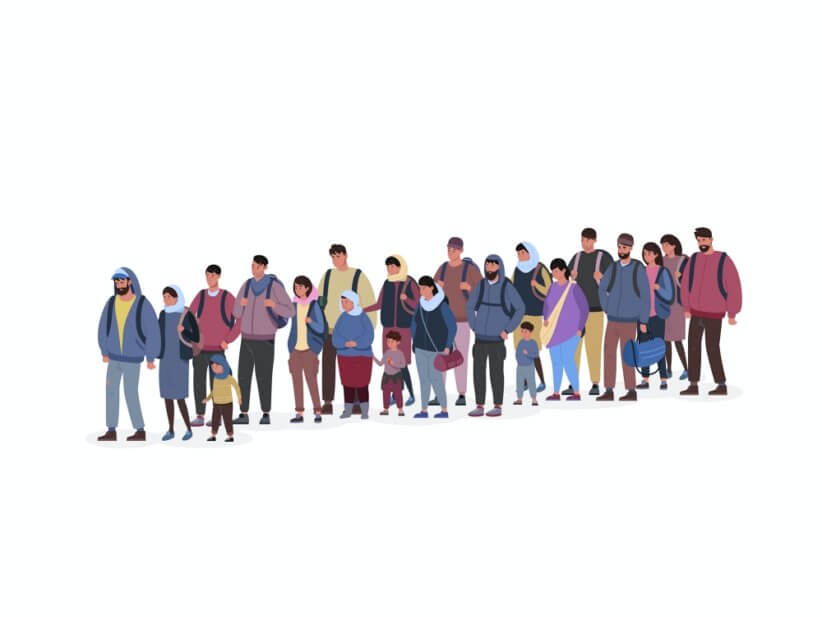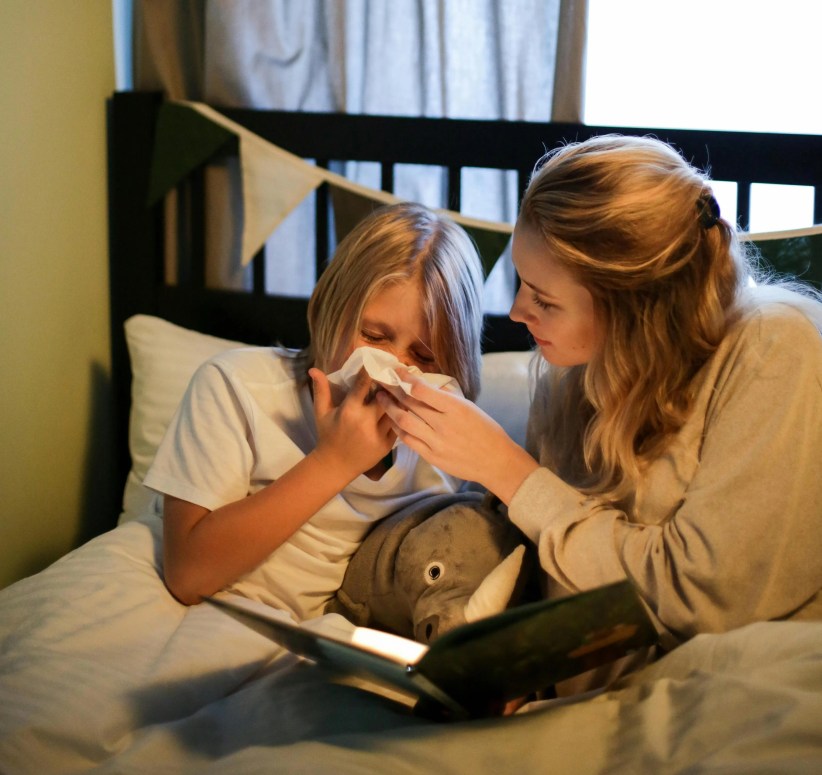
The NYC Migrant Crisis: How Families Are Caring for Their Kids
In Travis, a quaint neighborhood on Staten Island’s West Shore, dozens of newly arrived asylum seekers and migrants line the streets. Many are parents of children and infants. Several young mothers bottle-feed newborns on the sidewalk as toddlers run and play in the parking lot of their temporary homes — along hundreds of others — at the local Comfort Inn and Holiday Inn Express. The scene is one of many similar ones unfolding since the current NYC migrant crisis began several months ago.
As a sanctuary city, New York has always welcomed immigrants from countries near and far. But the current crisis can be considered unprecedented, as many U.S. southern border states continue to bus migrants up north in an effort to relieve their own overwhelmed communities.
With so many families arriving without a place to live, jobs for parents or schooling for children, New Yorkers have many questions, among them: How are migrant families caring for their kids? How is the city responding to the crisis?
Emergency Shelter and Hotel Stays
Unlike many other Staten Island neighborhoods, Travis has a small-town, tight-knit feel. Also unlike many other parts of the Island, there are far fewer businesses and less activity lining its mostly residential streets.
According to Gene Guerra, president of the Travis Civic Association, the area seems like an odd location for city officials to place families and children who know little of the United States, and little of New York City.
He explained that many residents are concerned for both the migrants and the students from the neighborhood. The school—P.S. 26—faces the potential of enrolling newly arrived children into its already overcrowded classrooms.
“Whoever did the due diligence of arbitrarily dropping these people into this area—it’s cruel. These people have nothing to do here,” Guerra said. “What do we have in Travis? Nothing. It’s probably the most remote area in New York City. It’s not fair to the residents of Travis, and not fair to the asylum seekers and migrants.”
Guerra added that Travis residents want to help more—they just weren’t prepared for the amount of people who would be moving into the neighborhood all at once.
“We feel for these people. We really do. The folks in Travis have really big hearts. That being said, we had no warning whatsoever that this was going to happen,” Guerra said. “The community board received a letter from the city stating that this hotel was going to immediately house asylum seekers. It happened overnight.”
Guerra’s concerns echo what many people across the city are wondering, especially when it comes to children and families—both citizens and migrants.
The NYC Migrant Crisis: Food and Clothing
The hotels in Staten Island are two of 48 locations around the city currently serving as emergency shelters. Officials say migrant families will be at the hotels for at least six to nine months. It’s too early to say what will happen after that.
The right to shelter in NYC is legally guaranteed. There are many ways to accomplish this, and usually the shelter system is involved. But city shelters are already overburdened, which is when hotels come in handy.
As for food, many families rely on donations from the community.
We spoke with several Travis-area asylum-seekers, including a young woman from Venezuela who was accompanied by two school-age girls. Through a translator, she explained that she was very happy to be here and described her trip from her home country to the U.S. border. She said her family ate mostly chicken on the way to the United States. Now they are eating a lot of pizza—and they’re very grateful for that.
Some local restaurants have been dropping off food—including pizza—for the families. Many Staten Islanders have been seen leaving large bags and boxes of food and clothing near the hotels.
Guerra remarked the help is great, but noted that arbitrarily dropping off bags and boxes in the street created chaos that upset residents. So, he worked with the community to organize and streamline the donations, and move them to one single location to help the hotel residents while keeping the sidewalks bag and box free.
Non-profits have also been organizing donation drives. Urban Fairies of Staten Island Community Outreach is one. Led by Alycia Campbell, the organization collects items such as coats, non-perishable snacks, baby food and formula, toiletries and books for kids.
“It’s important to help these children because this is already a traumatizing situation,” Campbell said. “What are they supposed to do about school clothes, lunch, backpacks, supplies, snacks, coats, blankets and pillows for nap time? What about the asthmatic children with developmental delays or issues with language barriers? When does it get easier for them?”
Anyone who is interested in making a donation can reach out to Campbell at a.campbell@urbanfairiesofsi.community or text 646-568-5094 to schedule a drop off.
The NYC Migrant Crisis: A Family-Focused Emergency Response
After declaring NYC in a state of emergency due to the crisis this month, Mayor Eric Adams announced two humanitarian relief centers, including a tent city recently built on Randall’s Island designed to house hundreds of adult male migrants.
Another center for families is planned to open at The Row, a swanky midtown Manhattan hotel once famous for its lively 1980s commercial billing it as the “lullaby of Broadway.”
According to the city, the center will initially serve 200 families, with the ability to scale to serve more in the coming weeks.
“As the numbers of asylum seekers entering New York City continues to increase without an end in sight, the city’s family-focused humanitarian emergency response and relief center will soon open to serve families with children and provide them with the care and compassion they deserve,” Adams said. “Our team will continue to work with these families and assess if they want to actually stay in New York City and, if not, help them get to their desired destinations.”
The city’s humanitarian relief centers will become the first touch point for arriving asylum seekers, helping people by immediately offering shelter, food, medical care, case work services, and a range of settlement options.
Many of NYC’s newly arrived migrants have emigrated from Venezuela, a country once considered one of the richest in Latin America. But that’s changed, due in large part to poor governance. The country has been suffering severe socio-economic instability and political turmoil in recent years, with over 7 million people having left since 2015.
Migrants are here from other countries, too, including Colombia. They’ve been arriving in NYC on buses and in masses since the start of summer, often with help from governors of southern states, including Texas Gov. Greg Abbott.
According to information from Abbott’s office, Texas has bused over 3,000 migrants to NYC since Aug. 5 as part of its effort to relieve overwhelmed border communities in the state. NYC, meanwhile, reports the number of asylum seekers in NYC has surpassed 18,600 at press time.
The Enrollment Process into NYC Public Schools
Enrollment into public schools has been a point of contention among parents, teachers and elected officials. The mass arrival of school-age children into NYC comes as public schools continue to battle overcrowding and funding cuts.
The NYC Department of Education has already started enrolling migrant children into public schools through its Project Open Arms, the city’s multi-agency collaboration to provide asylum-seeking families with support services and resources.
When it comes to enrollment, several factors are taken into account, according to city officials. These factors include distance, seat availability and multi-lingual programming and support for students at nearby schools when making offers. Enrollment counselors assist families at welcome center locations and select temporary shelters. Families are not required to present documentation during the enrollment process. They can enroll into schools immediately.
Students in temporary housing are excluded from immunization requirements as part of their right to immediate enrollment, according to the city. After they enroll, they have to get immunized.
More information about Project Open Arms is available online.
Pssst… Check out the The New York Family Fall Fun Guide
























